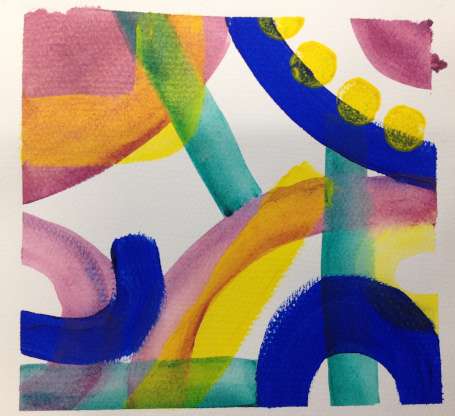This week we tackled glazing and blending in acrylic. Instead of a still life, I suggested splitting up the paper into sections with masking tape in order for each box to be a different experiment. We used soft brushes in order to get a softer effect than is possible with the stiffer ones, and diluted the paint with water in order to build up translucent layers. It’s a great technique for making abstract patterns – I could imagine many of the results as…









